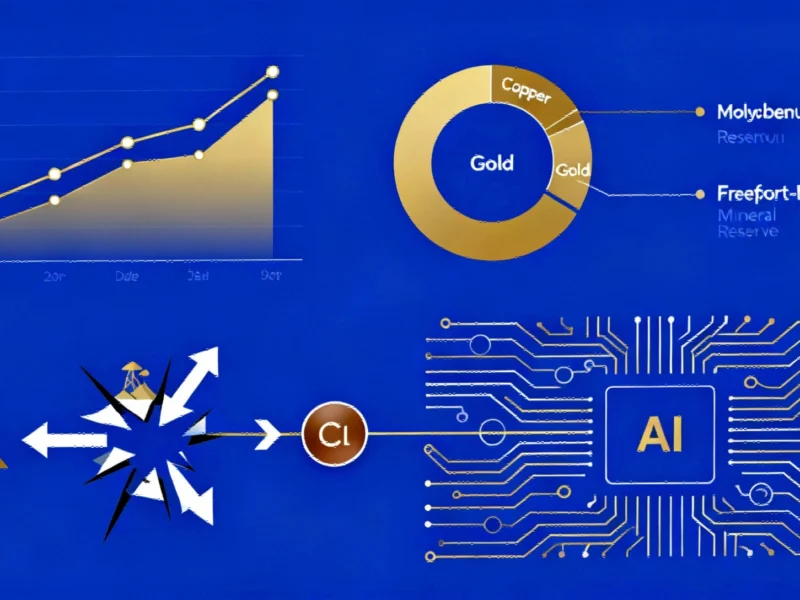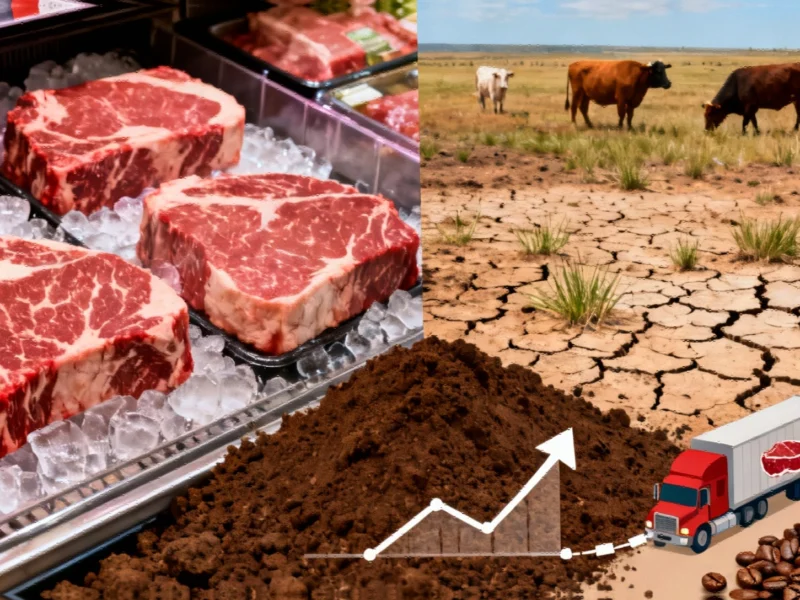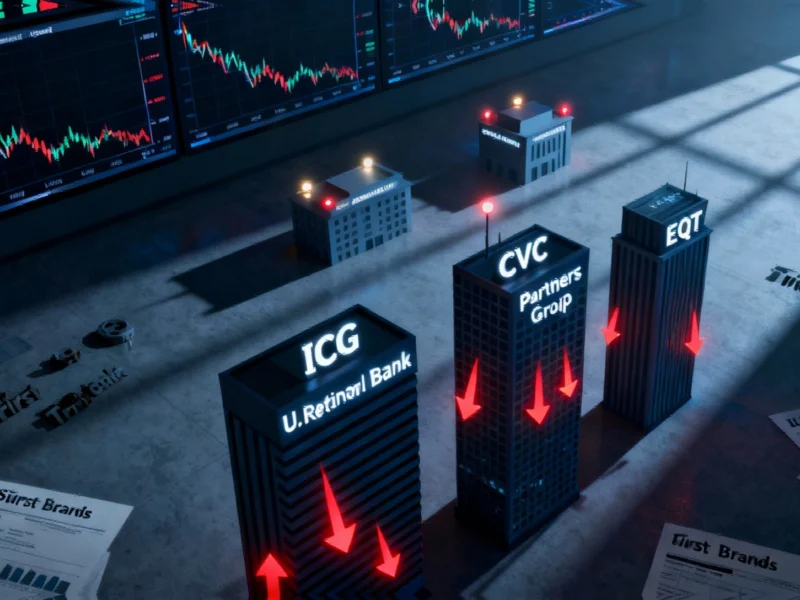The Trillion-Dollar Corporate Squeeze
Global corporations are facing an unprecedented financial challenge as new analysis reveals a staggering $1.2 trillion increase in projected costs for 2025. This dramatic revision, detailed in S&P Global’s comprehensive study of approximately 9,000 public companies worldwide, represents one of the most significant corporate financial adjustments in recent history. The findings suggest fundamental shifts in global trade dynamics, with profound implications for industrial computing infrastructure and manufacturing sectors.
Breaking Down the Cost Surge
S&P Global’s revised forecast now estimates total corporate expenses at $53 trillion for the year, a substantial increase from earlier projections. The analysis, drawn from more than 15,000 financial analysts tracking companies representing 85% of the global equity market, identifies multiple contributing factors. While tariffs represent a significant component, the report emphasizes that wage pressures, energy cost fluctuations, and substantial capital expenditures in AI infrastructure development collectively drive this financial transformation.
According to the findings detailed in the comprehensive corporate cost analysis, global corporate margin expectations have contracted sharply by approximately 0.64%, translating to $907 billion in lost profits among firms covered by sell-side analysts. This “wedge” between previous expectations and current reality consists of a $600 billion increase in revenue forecasts coupled with a $300 billion decline in earnings estimates.
The Consumer Impact Equation
The distribution of these increased costs reveals troubling patterns for consumer economies. Of the estimated $907 billion in lost profits, approximately two-thirds ($592 billion) is being transferred to consumers through higher prices. The remaining one-third ($315 billion) is absorbed internally through reduced corporate earnings. However, the report notes that “real output” is declining, suggesting consumers may ultimately bear more than the calculated two-thirds of the financial burden as they pay higher prices for fewer goods.
This economic pressure comes amid significant industry developments in manufacturing and production methodologies. Companies are increasingly seeking efficiency through technological integration and process optimization to mitigate these financial pressures.
The Tariff Debate: Divergent Perspectives
The political and economic discourse surrounding tariff impacts reveals sharply contrasting viewpoints. Trump-appointed Fed Governor Christopher Waller contends that tariff effects on inflation have been modest and predominantly affect higher-income households, noting that “the highest-earning 10% account for 22% of personal consumption.”
Conversely, analysts from TS Lombard present a starkly different assessment, describing the economic fallout as sharply divided by income levels. Dario Perkins of TS Lombard characterized the situation as “the rich are having a party, and the poor are having a recession,” highlighting the disproportionate burden on lower- and middle-income households.
Experts consistently describe tariffs as functioning like a “regressive tax,” with lower-income consumers experiencing the most significant impact. As Mohammad Elahee, professor of international business at Quinnipiac University, explained to Fortune, “For higher-income households, this impact is minimal,” noting that luxury goods often maintain price premiums regardless of tariffs.
Technological Responses and Infrastructure Investments
Corporate responses to these financial pressures include accelerated investment in automation and computing infrastructure. The substantial capital expenditure increases, particularly in AI infrastructure noted in the S&P report, reflect corporate strategies to enhance efficiency and reduce long-term operational costs. These investments align with broader market trends toward technological integration across industrial sectors.
The computing industry itself faces both challenges and opportunities in this environment. As companies seek more efficient operating systems, we’re seeing interesting related innovations in platform development and deployment strategies. The shift toward more cost-effective computing solutions represents one potential response to the broader financial pressures identified in the S&P analysis.
Supply Chain Realignment and Manufacturing Evolution
The White House maintains that current consumer strain represents a transitional phase. As White House spokesperson Kush Desai stated, “Companies are already shifting and diversifying their supply chains in response to tariffs, including by onshoring production to the United States.”
This supply chain evolution coincides with significant recent technology advancements in manufacturing and materials science. Next-generation structural engineering and production methodologies may help offset some cost pressures through enhanced efficiency and reduced material requirements.
Meanwhile, the industrial computing sector continues to drive innovation across multiple domains. From industry developments in extended reality applications to market trends in urban infrastructure integration, technological advancement continues despite financial headwinds.
Conservative Estimates and Future Projections
The S&P report cautions that its $1.2 trillion estimate should be viewed as a “floor, not a ceiling” for corporate cost increases. The analysis notes that firms without analyst coverage tend to be smaller and less diversified, potentially experiencing even greater proportional impacts. This suggests the true financial burden may exceed the already substantial figures presented in the current assessment.
As global corporations navigate this challenging financial landscape, the interplay between tariff policies, technological investment, and supply chain optimization will determine both short-term stability and long-term competitive positioning. The $1.2 trillion cost increase represents not just a financial challenge but a fundamental restructuring of global corporate economics with far-reaching implications for industrial computing, manufacturing, and consumer markets worldwide.
This article aggregates information from publicly available sources. All trademarks and copyrights belong to their respective owners.
Note: Featured image is for illustrative purposes only and does not represent any specific product, service, or entity mentioned in this article.



